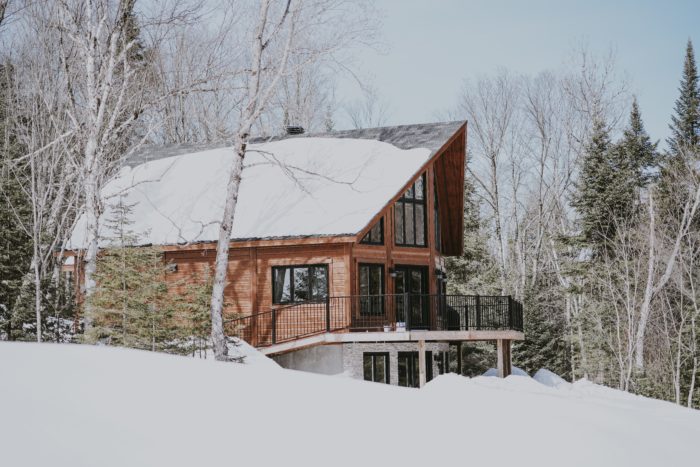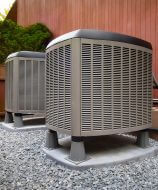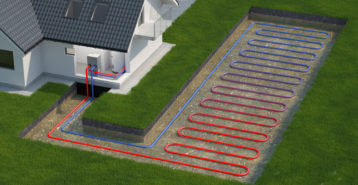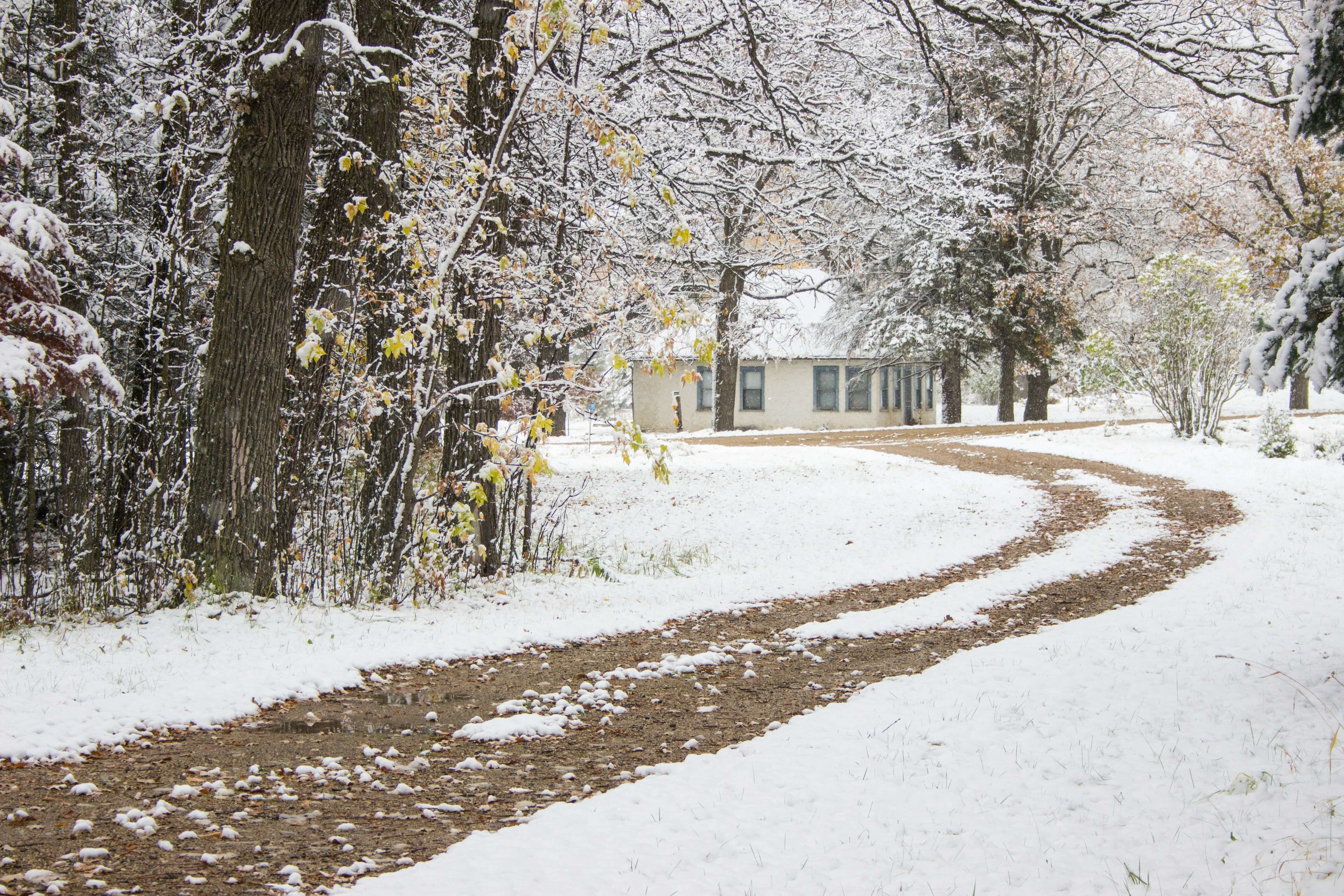Can You Use a Heat Pump in a Cold Climate?
Yes, modern cold climate heat pumps are specifically designed to perform in freezing temperatures. Traditional air-source heat pumps begin to lose efficiency when the temperature drops below 40 degrees Fahrenheit. However, newer models use variable-speed compressors and advanced refrigerants. This technology allows them to extract heat from the air even when it’s below zero. For homeowners in very cold regions, a dual-fuel setup pairs the electric heat pump with a gas furnace to ensure reliable, back-up heating in extreme conditions.

What Qualifies as a Cold Climate Heat Pump?
A cold climate heat pump (CCHP) is engineered to operate efficiently in areas where winter temperatures regularly drop below freezing. These systems meet specific performance standards for low-temperature operation. This means you can choose an HVAC system that’ll heat your home without relying heavily on backup fuel sources.
To earn ENERGY STAR Cold Climate certification, a heat pump must meet the following requirements:
- Deliver at least 70% of its heating capacity at 5 degrees Fahrenheit compared to its capacity at 47 degrees Fahrenheit.
- Have a Heating Seasonal Performance Factor (HSPF2) of 8.1 or higher.
- Maintain a Coefficient of Performance (COP) of 1.75 or higher at 5 degrees Fahrenheit.
Cold climate heat pumps are built to perform even in freezing conditions. Many models can operate at outdoor temperatures as low as -22 degrees Fahrenheit. To meet ENERGY STAR Cold Climate standards, a system must provide at least 70% of its rated heating capacity when the outdoor temperature is 5 degrees Fahrenheit.
How Do Heat Pumps Handle Cold Temperatures?
Heat pumps move heat rather than generate it. This makes them highly efficient but also dependent on the outdoor air temperature. In milder winter climates — such as the Mid-Atlantic or Pacific Northwest — standard air-source heat pumps typically perform well throughout the year.
In colder regions, including the upper Midwest and Northeast, cold climate heat pumps maintain efficiency using advanced technology. They extract heat from the air, even in frigid temperatures.
Related: Using a Heat Pump in Minnesota
What’s the Lowest Temperature a Heat Pump Can Handle?
Most cold climate heat pumps can operate efficiently as low as -5 degrees Fahrenheit to about -15 degrees Fahrenheit, depending on the model. Some brands boast operating at even lower temperatures. Standard air-source systems usually work best between 25 and 50 degrees Fahrenheit. This means they typically have to rely on back-up power much sooner than CCHPs.
Below about -15 degrees Fahrenheit, even advanced systems may struggle to maintain output. Many homeowners often rely on backup heating from a furnace. States such as Minnesota, North Dakota, and Alaska often require hybrid systems for consistent performance given how cold winters get in these parts.
Cold Climate Heat Pump Cost
Cold climate heat pumps cost between $5,000 and $12,000 on average, including installation. Costs vary by home size, condition, and system type. Your home’s insulation quality and ductwork efficiency can also have an impact on prices. Keep in mind that many CCHPs meet ENERGY STAR standards, which qualify for rebates and tax credits, helping with that price tag.
There are several types of CCHPs, including water-source systems, absorption heat pumps, and gas-fired heat pumps. But air-source and geothermal are the most common. Here’s what to know about these two options:
- Air-Source: They transfer heat into your home from the air outdoors. Air source heat pumps are more common and affordable than geothermal options. Expect to pay from $4,000 to upwards of $25,000.
- Geothermal: They pull heat from the ground and are more expensive because they last longer and require excavation and analysis of the soil around your home. Expect to pay from $8,000 to $30,000 or more.
Related: Heat Pump Cost and Buying Guide
Heat Pumps vs. Other Heating Options for Cold Climates
Different heating systems suit different regions and needs. Here’s how heat pumps compare to other common options.
Furnaces
Furnaces generate heat by burning fuel, providing steady warmth in extremely cold weather. Pairing a heat pump with a furnace creates what is known as a dual-fuel setup. This option allows the system to switch automatically between electric and gas heat for the best efficiency.
Boilers and Radiators
Boilers heat water for radiators or radiant floor systems. They’re ideal for homes that are already equipped with hydronic (hot water) heating. But they can be less efficient than a modern cold climate heat pump.
Central Heating Systems
Central heating systems either push air into the home with forced air or generate hot water for radiators. Traditional central heating systems can be replaced or supplemented by ducted heat pumps. You’ll get better energy efficiency and cooling capability in warmer months.
Best Cold Climate Heat Pumps
The best heat pumps for cold weather include:
- Cold Climate Air-Source Heat Pumps (ccASHPs): Designed to perform efficiently in subfreezing temperatures by drawing heat from air and pushing it into the home.
- Ductless Mini-Split Systems: These are great for zoned heating and homes without ductwork. You can install them for targeted heating of a specific room or section of your house.
- Geothermal (Ground-Source) Heat Pumps: These systems use stable underground temperatures to provide reliable heating even in extreme cold. However, they’re much more expensive to install, bringing up their overall price.
Best Cold Climate Heat Pump Brands
Several manufacturers now produce reliable systems for cold climates, including:
- Mitsubishi Electric: Quiet, efficient systems with 12-year warranties.
- Carrier: More than 100 years in business and our number one pick.
- Trane: Durable units with a premium price tag.
- Lennox: Offers premium heating with multiple ENERGY STAR awards.
See our full list of the best heat pump brands to compare features and warranties.
Conclusion
Cold climate heat pumps make it possible to enjoy efficient, year-round comfort even in freezing weather. If you live in a region with harsh winters, choosing an ENERGY STAR-certified cold climate model can keep your home warm and your energy bills lower. In addition, pairing these systems with furnaces offers seamless temperature control all winter long.
Modernize can help you connect with trusted local installers who specialize in cold climate systems. Get started today with a free quote for your home.
Compare top-rated HVAC pros in your area.
Read real homeowner reviews, explore qualifications, and view promotions. Modernize makes it easy to browse professionals and find one that will be perfect for your project.










